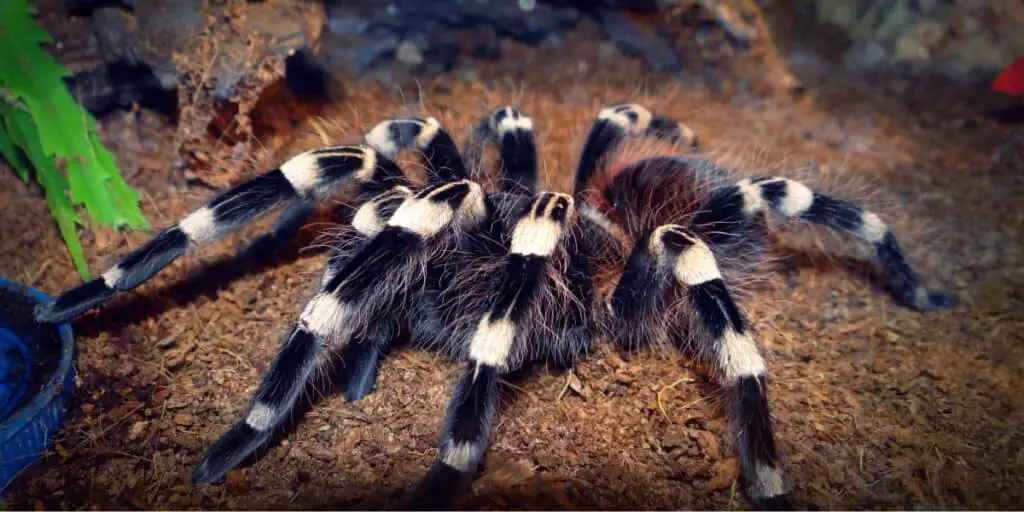If you are curious about the difference between a tarantula and a spider, you might be surprised to learn that all tarantulas are spiders, but not all spiders are tarantulas. Tarantulas belong to a specific family of spiders called Theraphosidae, which contains over 1000 species of large, hairy and often colorful arachnids. However, tarantulas differ from other spiders in many ways, such as their size, their hairs, their fangs, their webs, their diet, their lifespan and their behavior. In this blog post, we will explore some of these key differences and learn more about these fascinating creatures.
Size
One of the most obvious differences between tarantulas and other spiders is their size. Tarantulas are among the largest spiders in the world, with some species reaching up to 12 inches in leg span. The Goliath birdeater (Theraphosa blondi) is considered the largest spider by mass, weighing up to 6 ounces. In contrast, most other spiders are much smaller, with an average body length of less than an inch. Some of the smallest spiders are only 0.02 inches long, such as the Patu digua from Colombia.
Hairs
Another distinctive feature of tarantulas is their abundance of hairs on their bodies and legs. These hairs serve various functions, such as sensing vibrations, camouflage, insulation and defense. Some tarantulas have special hairs called urticating hairs, which they can flick off their abdomens when threatened. These hairs are barbed and can cause irritation, itching and even blindness if they get into the eyes or nose of a predator or a human. Not all tarantulas have urticating hairs, and not all spiders that have them are tarantulas. For example, some members of the Lycosidae family (wolf spiders) also possess these hairs.
Fangs
Tarantulas have fangs that point downward, unlike most other spiders that have fangs that point sideways. This means that tarantulas have to strike their prey from above, while other spiders can bite from any direction. Tarantulas also have stronger muscles to drive their fangs into their prey, which can penetrate the exoskeletons of insects and even small vertebrates. Tarantula venom is usually not dangerous to humans, unless the person is allergic or the bite gets infected. However, some species of true spiders have venom that can cause serious harm or even death to humans, such as the black widow (Latrodectus) or the brown recluse (Loxosceles).
Webs
Tarantulas do not use webs to catch their prey, unlike many other spiders that spin intricate webs to trap insects. Instead, tarantulas rely on their eyesight, their hairs and their speed to hunt down their food. Some tarantulas do use silk to create burrows, line their nests, make egg sacs or construct trip wires to alert them of potential prey or predators. Tarantulas have two or four spinnerets at the end of their abdomen, while most other spiders have six spinnerets.
Diet
Tarantulas are carnivorous and feed on a variety of animals, such as insects, worms, centipedes, scorpions, lizards, frogs, mice and even birds. They use their fangs to inject venom and digestive enzymes into their prey, then suck out the liquefied tissues. Tarantulas can go for long periods without food, sometimes up to a year. They also drink water from dew drops or small pools. Other spiders have similar diets, but they usually feed on smaller prey items than tarantulas. Some spiders are also herbivorous or omnivorous, such as the Bagheera kiplingi from Central America that eats mostly plant nectar.
Lifespan
Tarantulas have a much longer lifespan than most other spiders. Some tarantula species can live for more than 20 years in captivity, while most other spiders only live for a few months or years. The lifespan of a tarantula depends on several factors, such as the species, the sex, the environment and the availability of food. Female tarantulas tend to live longer than males, as males usually die soon after mating or are eaten by the females. Tarantulas also molt throughout their lives to grow and regenerate lost limbs or damaged organs. Molting is a vulnerable process that can take several hours or days.
Behavior
Tarantulas are generally solitary and nocturnal animals that prefer to hide in burrows or under rocks during the day and come out at night to hunt or mate. They are not aggressive towards humans unless provoked or threatened. They will usually try to escape or display a warning sign, such as raising their front legs, hissing or showing their fangs. If these tactics fail, they will either bite or flick their urticating hairs. Tarantulas are also territorial and will fight with other tarantulas or spiders that invade their space. Some tarantulas are more social and can live in groups or colonies, such as the cobalt blue tarantula (Haplopelma lividum) from Southeast Asia.
Conclusion
As you can see, tarantulas are very different from other spiders in many aspects. They are fascinating and diverse animals that deserve respect and admiration.




